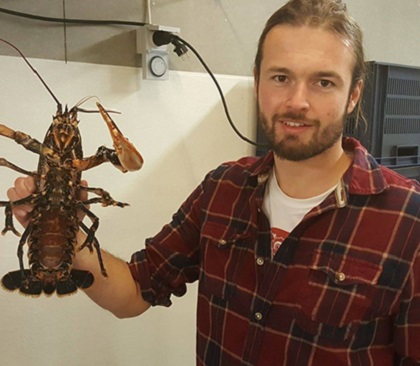
Features
Feeding and Nutrition
Sustainability
New study favours use of feed by-products for fishmeal
November 14, 2019 By Nestor Arellano
 James Hinchcliffe with lobster, photographed by Linda Svanberg.
James Hinchcliffe with lobster, photographed by Linda Svanberg. Findings of study by researchers at the University of Gothenburg in Sweden indicate that by-products from industrial feed production can be an environmentally sustainable substitute to wild-caught aqua feed.
The goal of the study was to gain information for the farming biology of the Atlantic wolffish and lobsters, developing a circular economy model and creating minimal environmental impact in accordance with the UN’s 2030 Agenda, said the thesis author James Hinchcliffe.
Researchers from the university found that it is possible to develop feed high in protein from unused by-products such as the meat left on fish bones after fillets have been cut from the bones.
“With a new process, we can use fish meat to give fishmeal a higher protein content. By using feed containing by-products from the seafood industry to a greater extent in general, use of wild-caught aqua feed, like anchovies, can be reduced,” Hinchcliffe said.
Hinchcliffe and his colleagues also developed a species-specific feed to meet the need for suitable nutrients for lobster larvae.
“We found that a diet with a percentage of shrimp, which came from local by-products from the industry, was the best source and most promising candidate for sustainable lobster feed,” he said.
The studies investigated around ten different kinds of feed with local ingredients. Lobster larvae grow and survive best when they can eat related species, which is why a lot of cannibalism is seen in today’s lobster farming industry.
The study also investigated the nutritional needs of the Atlantic wolffish. The researchers found that the Atlantic wolffish is an ideal specie to farm. The fish are relatively easy to manage and resistant to stress.
Print this page